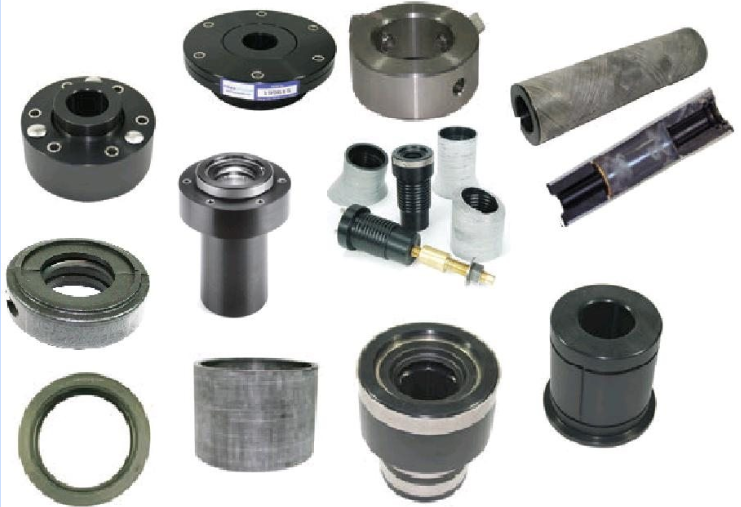Rudder bearing parts
Rudder bearing parts are essential components within the machinery of marine vessels, orchestrating the excellent navigation of ships across vast expanses of water. These components, often overlooked in maritime engineering, are the ones behind the precision and agility of marine. Every ship’s steering system contains the rudder, an essential structure that directs the vessel’s course amidst the ocean currents’ ebb and flow.
However, behind this seemingly straightforward mechanism lies a complex interplay of bearings, shafts, and supporting structures. Each component play a vital role in ensuring the smooth and reliable operation of the rudder. From the bearings that facilitate frictionless motion to the robust systems that withstand the forces of nature, every aspect of rudder bearing parts contributes to the seamless navigation of maritime vessels. This guide explains the rude bearing parts’ functions, systems, and manufacturing.
What are Rudder Bearing Parts
Rudder bearing
Rudder bearing parts are integral to a ship’s rudder system, contributing to its maneuverability and overall performance. These parts are designed to support the rudder stock, the central shaft around which the rudder rotates, and facilitate its movement with minimal friction and wear. Rudder bearing parts typically include bearings, bushings, sleeves, or similar mechanical elements that support and allow for smooth pivoting of the rudder blade.
These components are strategically placed within the rudder assembly to ensure proper alignment and stability while accommodating the dynamic forces exerted during steering maneuvers. The primary function of rudder bearing parts is to reduce friction between the rudder stock and its housing, enabling the rudder to move freely and responsively in response to steering commands. By minimizing friction, these parts help optimize the efficiency of the steering system, allowing for precise control over the vessel’s direction.
Additionally, rudder bearing parts help distribute loads evenly across the rudder assembly, preventing excessive wear and prolonging the lifespan of the steering components. Proper lubrication and maintenance of these parts are essential to allow smooth operation and prevent premature failure of the rudder system.
Components of Rudder Bearing Parts
Rudder system
Rudder bearing parts comprise various components, each serving a distinct function in facilitating the smooth operation of the vessel’s steering mechanism. Below, we will look into the key components of rudder bearing parts, outlining their functions and providing an overview of the manufacturing techniques typically employed for their production.
Bearing Outer Ring
The outer ring of rudder bearings is a crucial component that houses the rolling elements and provides structural support to the bearing assembly. Its primary function is to maintain the alignment and spacing of the rolling elements, ensuring smooth and frictionless rotation of the bearing.
- Manufacturing Technique: CNC Machining
Computer Numerical Control (CNC) machining is a widely utilized manufacturing technique for producing bearing outer rings with exceptional precision and accuracy. CNC machines use computer-controlled tools to remove material from a workpiece, resulting in highly detailed and complex geometries. For bearing outer rings, 5-axis CNC machining allows for the creation of intricate raceway profiles and precise dimensional tolerances, ensuring optimal performance and durability of the bearing assembly.
CNC machining also offers versatility in working with different CNC materials, including metals like stainless steel, bronze, and aluminum, as well as engineering plastics like nylon and PTFE (Polytetrafluoroethylene).
Bearing Inner Ring
The inner ring of rudder bearings complements the outer ring by providing a mating surface for the rolling elements and the shaft, facilitating smooth rotation and load distribution within the bearing assembly.
- Manufacturing Technique: CNC Machining
Similar to the outer ring, the inner ring of rudder bearings is typically produced using 5-axis CNC machining processes for precise control over dimensions, tolerances, and surface finishes. CNC machines enable manufacturers to create intricate profiles and precise geometries to ensure proper fit and alignment with the shaft and rolling elements.
Whether machining metal alloys or engineering plastics, CNC techniques offer the flexibility and accuracy required to meet the demanding specifications of rudder bearing inner rings.
Rolling Elements
Rolling elements, like balls or rollers, are fundamental components of rudder bearings that reduce friction and enable smooth rotation between the inner and outer bearing rings.
Rolling elements serve as intermediary components that transmit the applied load from the inner ring to the outer ring while facilitating low-friction movement. Rolling instead of sliding minimizes frictional resistance, allowing for efficient energy transfer and prolonged bearing life.
- Manufacturing Technique: CNC Machining
CNC machining is a widely adopted manufacturing technique for producing rolling elements with exceptional precision and consistency. CNC turning machines are equipped with specialized tooling and software that enable precise shaping and sizing of the rolling elements to meet exacting specifications.
Whether manufacturing steel balls or cylindrical rollers, CNC turning ensures uniform dimensions, smooth surface finishes like polishing surface finishing, and tight tolerances, contributing to rudder bearings’ optimal performance and reliability.
Cage
The cage, also known as the retainer, is a critical component of rudder bearings that maintains the spacing and alignment of the rolling elements within the bearing assembly. The cage’s primary function is to prevent the rolling elements from contacting each other, ensuring uniform distribution of load and facilitating smooth rotation. Additionally, the cage helps to retain lubricant within the bearing, promoting effective lubrication and minimizing wear and friction.
- Manufacturing Technique: Stamping
Stamping is a cost-effective and efficient manufacturing technique commonly employed for producing cages for rudder bearings. During the stamping process, a sheet metal blank is placed into a stamping press and subjected to high-pressure forces, causing it to be shaped into the desired cage geometry.
Stamping offers advantages such as high production speeds, low material wastage, and the ability to produce complex shapes with minimal secondary operations. This makes it an ideal choice for manufacturing cages that require precise dimensions and intricate designs to accommodate various bearing sizes and configurations.
Seals
Rudder bearing seal
Seals play a crucial role in rudder bearing parts by creating a barrier against moisture, debris, and contaminants. They thereby protect the internal components and preserve the integrity of the bearing assembly.
Seals are designed to offer a tight and secure seal between the moving parts of the bearing assembly, preventing the ingress of water, dirt, and other foreign particles. By maintaining a protective barrier, seals help prolong the bearings’ service life and ensure optimal performance in marine environments.
- Manufacturing Technique: Compression Molding
Compression molding is a versatile manufacturing technique commonly used to produce seals for rudder bearing parts. A rubber or elastomeric compound is placed into a mold cavity and then subjected to heat and pressure to shape it into the desired seal geometry.
Compression molding offers advantages such as high production efficiency, precise control over dimensions and tolerances, and the ability to produce seals with intricate designs and profiles. This makes it well-suited for manufacturing seals that meet the stringent requirements of rudder bearing applications, including water, oil, and abrasion resistance.
Rivets and Other Fasteners
Rivets and other fasteners are essential components used in rudder bearing parts to securely join assembly elements, such as bearing housings, supports, and brackets. They provide mechanical strength and stability to the bearing assembly, ensuring the components remain securely attached and adequately aligned during operation. They withstand the forces exerted on the bearing assembly, including vibrations, shocks, and loads encountered in marine environments.
- Manufacturing Technique: Stamping
Stamping is a widely used manufacturing technique for producing rivets and other fasteners used in rudder bearing parts. During stamping, metal blanks are subjected to high-pressure forces to shape them into the desired fastener geometry. Stamping offers advantages such as high production efficiency, precise control over dimensions and tolerances, and the ability to produce fasteners with complex shapes and configurations.
This makes it a cost-effective and reliable method for manufacturing rivets and fasteners that meet the stringent performance requirements of rudder bearing applications.
Conclusion
Rudder bearing parts are essential components within the complex machinery of maritime vessels. They ensure smooth navigation and precise maneuverability on the open seas. Throughout this guide, we have delved into their diverse components, functions, and manufacturing techniques, shedding light on their critical role in maritime engineering.
From the precision-machined outer and inner rings to the meticulously crafted rolling elements and cages, each rudder bearing component contributes to the seamless operation of the vessel’s steering system. CNC machining, compression molding, and stamping techniques enable the production of high-quality parts with exceptional precision, reliability, and performance, ensuring smooth sailing for ships of all sizes and classes.

